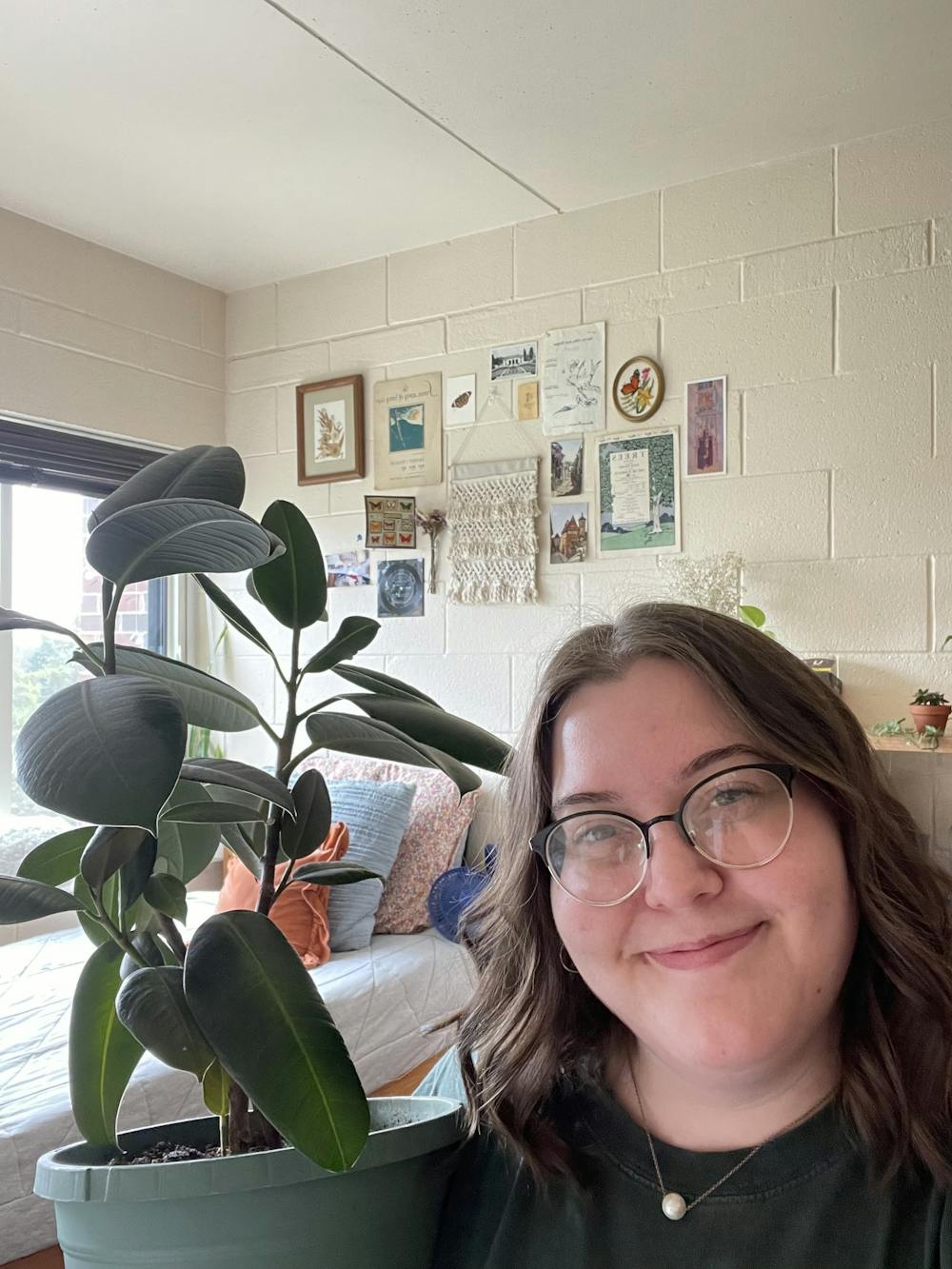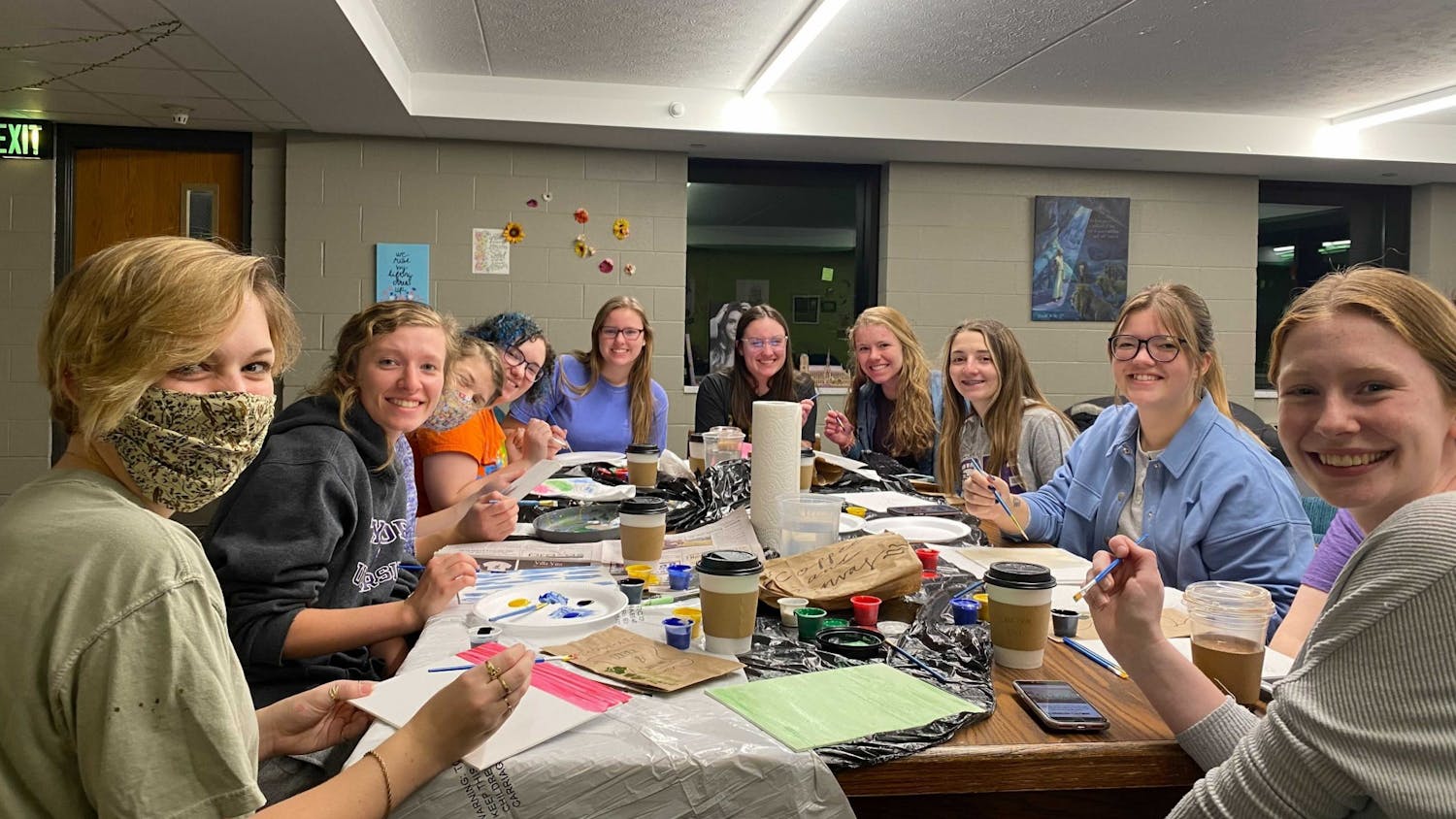There are few things in this world that I love more than my dorm full of plants.
However, I haven’t always had the greenest thumb.
Truly, there’s a bit of a learning curve to taking care of plants. But after getting a few plants my freshman year of college, I went full helicopter mom and learned everything I could.
So, here’s your chance to reap the rewards of my research (and trial and error) in a one-stop-shop summary. Whether you’re hoping to grow an indoor jungle or just have something to keep you company during the midnight grind, here are my top three pieces of advice for an aspiring greenhouse grad.
Be realistic with what you can keep alive.
I know it’s a wet blanket in a fun conversation, but in all likelihood, the prettiest and most Instagram-worthy plant is a lot of work. And, at the end of the day, would you rather have a trendy plant for a month or a lifelong friend?
Whichever you decide, make your peace with the outcome and proceed onward.
For beginners, I recommend cacti, snake plants and English ivy, all of which are very hearty plants. They don’t need to be watered often and grow in any level of light, but still provide the opportunity to practice and raise a thriving plant — a snake plant can even bloom in the winter months!
If you’ve successfully managed to keep cacti for a bit, try leveling up to a pothos, spider plant or start seeds of an herb. Generally, these plants need watering once a week, but their needs may change with the season or growth. Be a friend to your plants and listen to what they need.
Finally, for the adventurous dorm folk, fiddle leaf figs, rubber plants and monsteras are sought-after beauties, but can be a bit fickle with water and humidity. Fiddle leaves even infamously develop spots or drop leaves because they dislike the minerals in tap water. I’ve toiled with my own fiddle leaf and rubber tree for over a year, but they’re my pride and joy.
Pro tip: Save money and time by starting small. The whole point is to see growth, so let it grow into the great, big, beautiful plant you want under your care.
2. Gather the right supplies.
In my opinion, there’s no better container than a classic terracotta pot. Terracotta draws moisture away from the soil, helping prevent any root rot caused by the soil staying wet for too long. They also normally have drainage holes, which is a lifesaver for chronic over-waterers.
However, I’d be lying if I said I didn’t have some plants in those oh-so-cute thrifted mugs. Generally, cacti or succulents can do fine in these containers as long as you’re careful when watering. A few rocks at the bottom will also help create drainage in the soil.
It’ll also help to make sure you buy the right soil for your plant, likely just indoor plant or cactus soil. You’ll also need some utensils (plastic spoons or forks will work in a pinch) and something to contain the mess. One of my friends likes to use a gardening mat from Amazon, but I use a trusty old Rubbermaid box. It’s just up to you and your vacuum.
Outside of potting your plant, you might also be interested in getting a small watering container, indoor plant food or a grow light. That said, I’ve never been that bougie.
3. Be patient with the process.
Indoor plants look great, but they don’t just sit and look pretty on their own. Most likely, you’re going to have a bit of trial and error. I’d always recommend doing some light reading about the plant online, but like a lot of things in college, you might just end up winging it, and that’s OK too.
Water intake can vary widely depending on the type of plant, its size and the season of the year. However, a good place to start is always just watering thoroughly.
If your pot has a drainage hole, put it in a bowl and add water incrementally until the water begins draining. If the soil is completely dry before watering, allow the plant to sit in the water for 10 minutes and re-absorb some of the water.
If your pot does not have a drainage hole, whisper a quick prayer and water lightly, just enough to wet the top of the soil.
Then, to the best of your ability, try not to panic through the next week. Let your new friend settle and set new roots.
After a week, use a finger to poke a hole in the soil, roughly 1 inch deep. More than likely, your enemy no. 1 will be overwatering and root rot. If the soil feels damp or moist, give it time to dry out. For most plants, the soil should be completely dry in between waterings. When it’s dry again, make adjustments to the quantity of water and try again.
Eventually, you’ll figure out what your plant likes and needs. Once you’ve hit this point, I recommend making it part of your weekly structure. For me, Sundays are personal “reset days” where I make time to do laundry, take out my trash and give my plants some TLC. Not every plant is watered every week, but I normally check in quickly to make sure each is doing OK.
Pro tip: If at any point you realize your plant isn’t a good fit, don’t be afraid to gift it to a friend and start fresh again. You didn’t fail, you just learned something new.
Lastly, if you’re going to be a plant person, support your local greenhouses! Plants of varying kinds can be purchased at the Nussbaum Greenhouse at Taylor (during sales), Perennial Farm Garden Center in Upland, Jelly Bean Plant Nursery (online) and Gooseberry Creek Garden Center in Marion.





